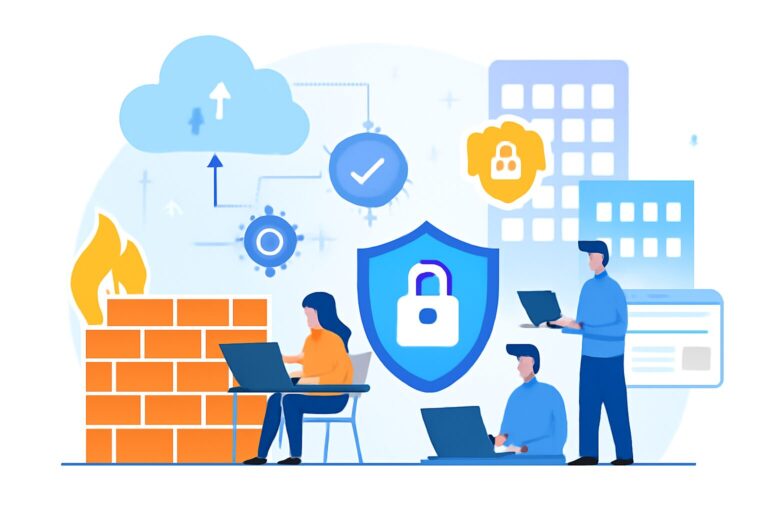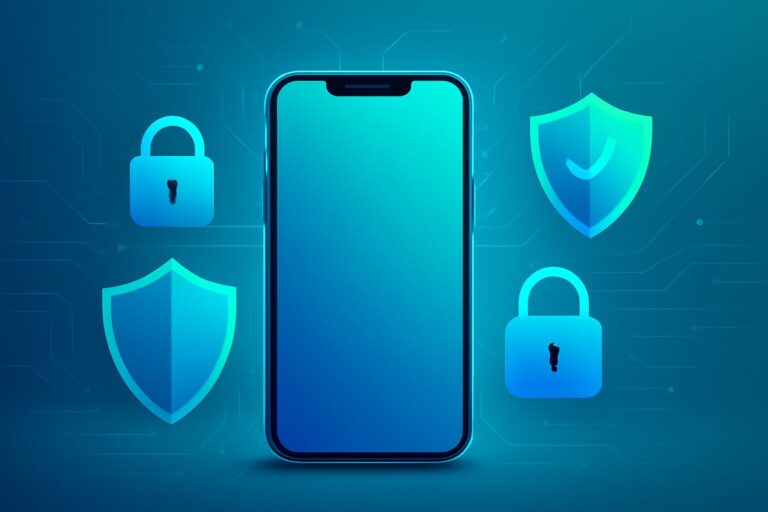**Urgent! Master These 5 Major OT Cybersecurity Threat Warning Strategies to Safeguard the Future of Industry**
OT cybersecurity threat alerts are an indispensable shield in the industrial internet era. With the continuous integration of Industrial Control Systems (ICS), edge computing, and supply chains, facing complex and variable cyberattacks, mastering comprehensive threat detection and protection measures has become crucial for enterprise security. This article will deeply analyze five key aspects of OT cybersecurity threat warnings, providing you with practical and forward-looking security strategies to help build an unbreakable industrial defense.
—
## OT Cybersecurity Threat Alerts: Critical Warning for Industrial Control Systems
OT cybersecurity threat alerts are core mechanisms for monitoring and preventing security risks within operational technology systems, particularly targeting critical components like SCADA, PLC, and DCS in industrial environments. Currently, industrial control systems are frequently exposed to highly sophisticated cyberattacks, such as ransomware infiltration, zero-day vulnerability exploits, and spyware penetration, severely threatening supply chain stability and production continuity.
🔍 **From Vulnerability Assessment to Real-time Threat Detection**
Effective OT cybersecurity threat alerts rely on comprehensive vulnerability assessments of critical systems. By deeply scanning PLC firmware, SCADA communication protocols, and edge device interface vulnerabilities, the threat alert system can instantly identify abnormal behaviors. For example, unusual command sequences, unauthorized access attempts, and device communication anomalies can be quickly flagged, mitigating potential intrusion risks.
🔒 **Urgent Intrusion Response Strategies**
When potential threats are detected, timely and effective intrusion response is critical. Establish automated emergency processes including disconnecting infected device networks, initiating backup solutions, and rapid patch deployment to minimize losses. By pre-setting emergency response playbooks combined with AI-driven intelligent monitoring technology, enterprises can react promptly to prevent widespread network paralysis.
—
## Four Major Edge Computing Security Risks You Must Know
While edge computing significantly enhances industrial automation flexibility, it brings numerous security vulnerabilities. The diversity and decentralized management of edge devices often make them prime entry points for cyber attackers.
🖥 **Preventing Edge Device Interconnection Vulnerabilities**
Security gaps in distributed edge devices mainly reside in insufficient interface protection and authentication weaknesses. Implementing multi-factor authentication, unified Identity and Access Management (IAM), and reinforced device firmware security effectively prevents edge-side attacks. Moreover, continuous device health monitoring and firmware integrity verification are key to averting malicious tampering.
☁ **Supply Chain Security and Compliance Challenges from Cloud Sharing**
Frequent data exchange between edge and cloud segments means that any weak link in the supply chain can cause data leakage and business disruption. Especially in multi-party supply chain environments, compliance with international security standards such as ISO 27001, NIST, and GDPR is essential. Developing detailed supply chain security policies and conducting regular supplier security audits are crucial steps to avoid potential threats.
🔐 **Data Loss Prevention Strategies**
During data exchange between edge and cloud, encryption, access control, and data anonymization are indispensable. Transmission should adopt end-to-end encryption, and storage should utilize tiered permissions and audit trails to ensure sensitive data is not illegally accessed or leaked.
—
## Crisis Alert: Practical Guide to OT Cybersecurity Threat Alerts
Building an efficient OT cybersecurity threat alert architecture involves not only technology selection but also integrating organizational processes deeply with security situational awareness.
⚙ **Architecture and Deployment Key Points**
An OT cybersecurity threat alert system should integrate multi-layer defenses including network-level firewalls and intrusion detection systems (IDS), host-based protection agents, real-time threat intelligence platforms, and automated response mechanisms. Especially, anomaly detection tailored to modern industrial protocols (Modbus, OPC-UA) can effectively pinpoint attacks specifically targeting operational technology environments.
📊 **Security Situational Awareness and Dynamic Visualization**
By integrating threat intelligence with real-time data analytics, a visual security situational map helps Security Operation Centers (SOC) rapidly assess threat levels and impact scopes. Dynamic dashboards, alert cascading, and AI-driven pattern recognition assist security teams in maintaining technological advantages against complex, evolving attack scenarios.
🛠 **Vulnerability Assessment and Zero Trust Defense**
Continuous vulnerability scanning and patch management are essential to prevent known threat intrusions. The promotion of zero trust architecture strengthens access control policies, requiring every device, user, and process to undergo strict validation and continuous monitoring, establishing a solid defense.
—
## Urgency of OT Operational Compliance and Regulatory Requirements
Global compliance demands for OT security are becoming increasingly stringent, and enterprises cannot neglect the significant role of compliance in promoting security operations.
🌐 **Interpreting International Standards and Compliance Strategies**
ISO/IEC 27019, NIST SP 800-82 and other international standards provide detailed guidance on OT security. Compliance is not just about satisfying standards but ensuring scientific security policies and processes that assist enterprises from risk identification to emergency response all meet audit requirements.
📈 **Industry Regulation Trends and Benchmark Analysis**
With the development of industrial internet and smart manufacturing, mandatory regulations like IEC 62443 emphasize system security and lifecycle management. Enterprises should keep pace with regulatory trends, combine their risk management systems, and establish compliance frameworks aligned with industry best practices.
🔄 **Implementation Path: From Planning to Continuous Improvement**
Compliance management is an ongoing process, not a one-time project. From security policy formulation, responsibility implementation, employee training, to regular auditing and improvement, enterprises must proceed step-by-step to ensure security investments translate effectively.
—
## Cross-organization Collaboration and Supply Chain Security: Crucial Links Not to Be Overlooked
Supply chain security is an inseparable part of OT cybersecurity threat alerts, with any weak point potentially causing overall paralysis.
⚠ **Identifying Supply Chain Weak Links**
Common risks include vendor software vulnerabilities, security defects in device manufacturing, and information leaks within logistics chains. Setting strict supplier entry standards and security assessment procedures reduce potential risks.
🤝 **Cross-organization Emergency Joint Defense**
Emergency response plans emphasize collaboration. Multi-party crisis communication mechanisms and rapid response channels ensure quick coordination and remediation during supply chain incidents to minimize losses.
🔄 **Coordinated Monitoring and Protection from Edge to Cloud**
By linking security situational awareness between cloud and edge devices, timely detection and warning of risks are achieved, constructing a defense-in-depth system that effectively prevents threats from spreading across environments.
—
## FAQs
**What is OT cybersecurity threat alert?**
OT cybersecurity threat alert is a mechanism for monitoring and warning about security risks in industrial operational technology environments, designed to timely identify and respond to potential threats to protect critical infrastructure stability.
**Why is edge computing riskier in OT security?**
Edge computing devices are dispersed and management is complex; they often lack sufficient authentication and firmware protection, making them easier targets for attackers.
**How important is compliance for OT cybersecurity?**
Compliance ensures enterprises build security systems according to standards and regulations, not only meeting legal requirements but also enhancing overall defense levels and reducing security incidents.
**How to achieve real-time threat detection in OT environments?**
By deploying intrusion detection systems (IDS), behavior analysis tools, and threat intelligence platforms to capture abnormal traffic and device behaviors in real-time for quick response.
**How does supply chain security impact OT network defense?**
Weak supply chain security can lead to malware implantation, hardware vulnerabilities, and data leaks, undermining overall network trustworthiness and stability.
**Can AI technology improve OT cybersecurity threat alert efficiency?**
Yes, AI and machine learning can automatically identify abnormal patterns, improving threat detection accuracy and response speed, becoming a critical trend in future OT security.
—
**Conclusion: Building a New Benchmark for Zero-Accident Industrial Safety**
OT cybersecurity threat alerts are not just a protective wall but also the core support of intelligent security management. Through systematic vulnerability assessment, edge computing security strategies, compliance management, and supply chain joint defense, enterprises can comprehensively enhance the security resilience of the industrial internet. In the future, AI-enabled threat alert systems will become the industry’s favored new standard, leading toward a new era of zero-accident industrial operation safety.
Don’t hesitate! Visit De-Line Information Technology official website [https://www.de-line.net](https://www.de-line.net) now to learn how we help you build a solid OT security defense and upgrade to intelligent security management! 🚀
—
**References:**
– NIST SP 800-82 Guide to Industrial Control Systems Security
– IEC 62443 Industrial Network and System Security Standards
– ISO/IEC 27019 Information Security for Process Control Systems
Protect industrial security, starting from OT cybersecurity threat alerts! 🔐
************
The above content is provided by our AI automation poster




